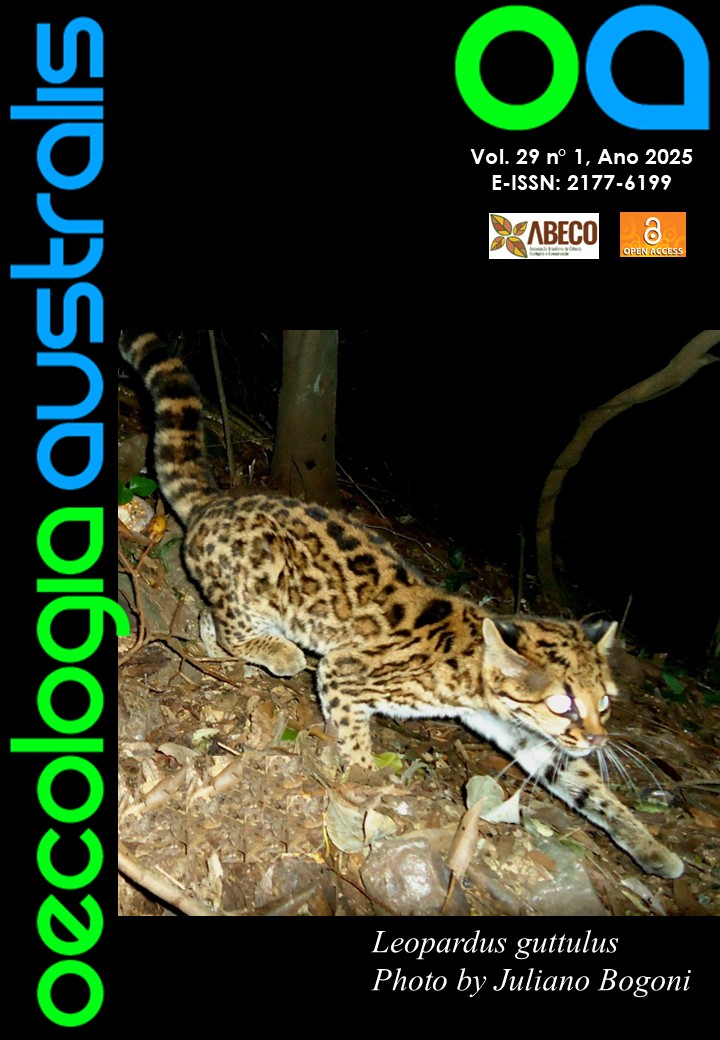COMPARATIVE ANALYSIS OF ICHTHYOFAUNAL RICHNESS IN A NEOTROPICAL REGION: DIVING, VISUAL CENSUS AND TRADITIONAL FISH COLLECTING TECHNIQUES
Exploring ichthyofaunal richness through diving and visual census
DOI:
https://doi.org/10.4257/oeco.2025.2901.02Abstract
The Neotropical region harbors unique biodiversity and a vast wealth of fish species. Inventories of river basins are essential for assessing environmental impacts. In this study, we analyzed the use of diving and visual census data as complementary tools for inventorying rheophilic ichthyofauna in the Tocantins River. Compared with traditional methods, diving and visual censuses register exclusive and shared species, increasing the efficiency of detecting fish diversity in rapids. We observed that Characiformes were predominantly sampled using traditional methods whereas diving and visual censuses played important roles in sampling Siluriformes. The cluster analysis highlighted the complementarity between diving and the visual census. These findings underscore the importance of employing effective and complementary methodologies for accurate inventorying of rheophilic ichthyofauna in Neotropical regions, minimizing the risks of neglect associated with conventional sampling methods.


